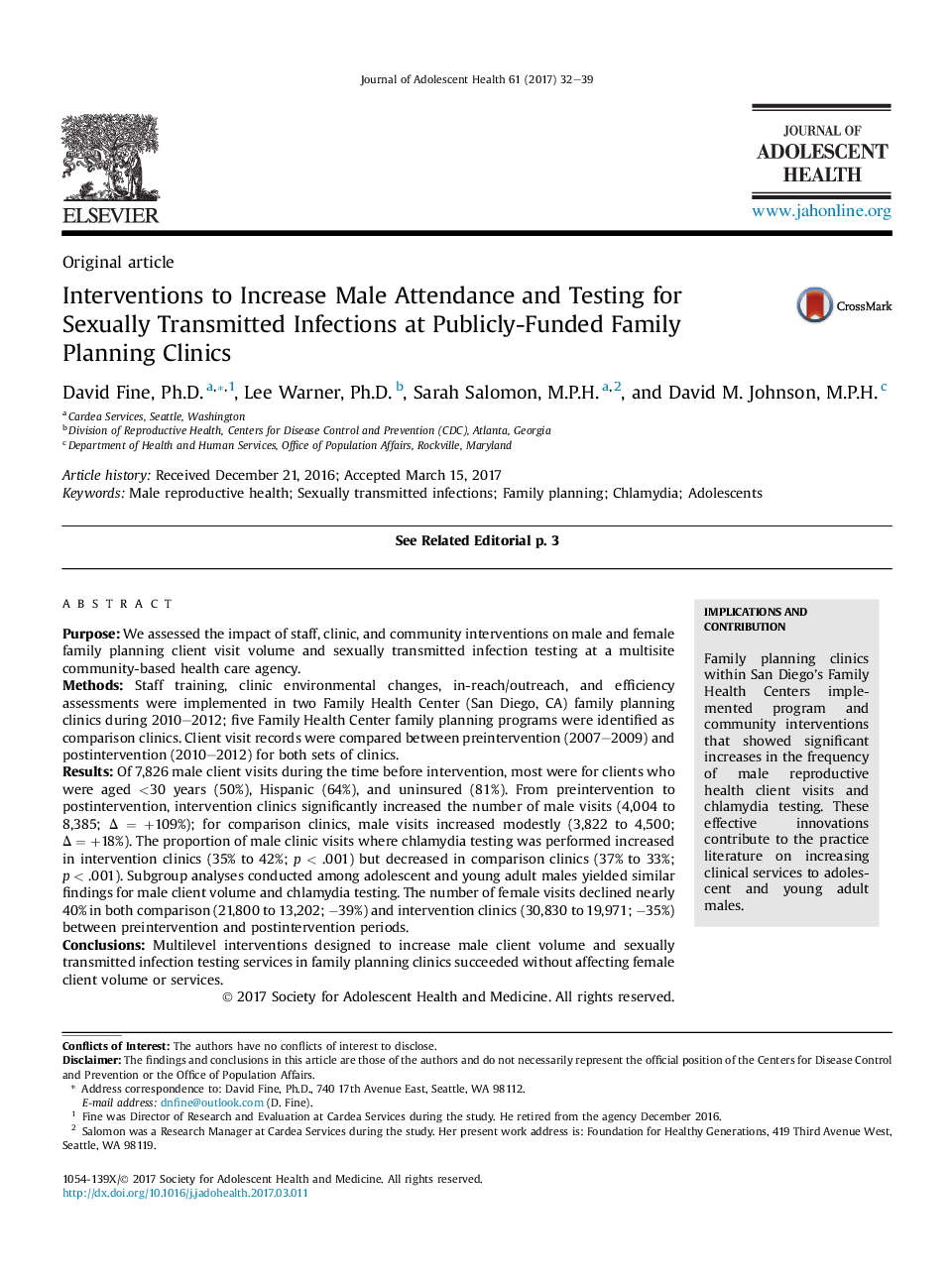| Article ID | Journal | Published Year | Pages | File Type |
|---|---|---|---|---|
| 5121179 | Journal of Adolescent Health | 2017 | 8 Pages |
PurposeWe assessed the impact of staff, clinic, and community interventions on male and female family planning client visit volume and sexually transmitted infection testing at a multisite community-based health care agency.MethodsStaff training, clinic environmental changes, in-reach/outreach, and efficiency assessments were implemented in two Family Health Center (San Diego, CA) family planning clinics during 2010-2012; five Family Health Center family planning programs were identified as comparison clinics. Client visit records were compared between preintervention (2007-2009) and postintervention (2010-2012) for both sets of clinics.ResultsOf 7,826 male client visits during the time before intervention, most were for clients who were aged <30 years (50%), Hispanic (64%), and uninsured (81%). From preintervention to postintervention, intervention clinics significantly increased the number of male visits (4,004 to 8,385; Π= +109%); for comparison clinics, male visits increased modestly (3,822 to 4,500; Π= +18%). The proportion of male clinic visits where chlamydia testing was performed increased in intervention clinics (35% to 42%; p < .001) but decreased in comparison clinics (37% to 33%; p < .001). Subgroup analyses conducted among adolescent and young adult males yielded similar findings for male client volume and chlamydia testing. The number of female visits declined nearly 40% in both comparison (21,800 to 13,202; â39%) and intervention clinics (30,830 to 19,971; â35%) between preintervention and postintervention periods.ConclusionsMultilevel interventions designed to increase male client volume and sexually transmitted infection testing services in family planning clinics succeeded without affecting female client volume or services.
